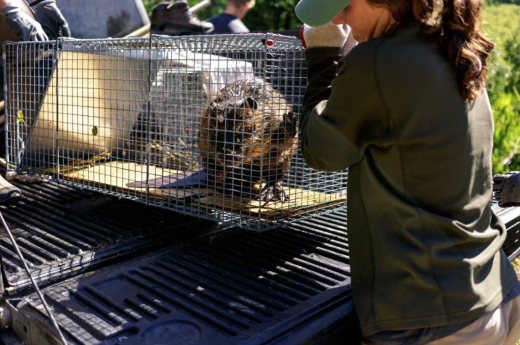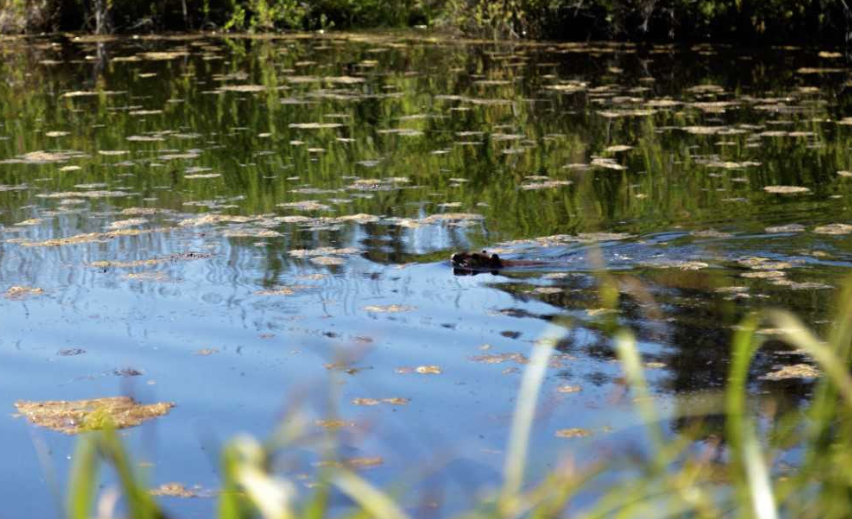Photo by Lizzie Bridges
By Megan Euclide
I am walking down to the river just after sunrise. There is no wind. Early light reflects off the glassy surface, brighter than I expect at this hour. My waders are already strapped. As I approach the water’s edge, I wonder, will I catch anything today?
This might sound like the start of a classic angling tale that ends in a tug-of-war with a 20-pound steelhead, but the catch of this day did not come by way of a rod and reel. Instead, I was after live beavers.
Throughout North America beavers play a significant role in creating ideal salmonid habitat. They are the perfect example of an ecosystem engineer, which is an organism that creates and modifies entire environments. Beavers construct dams using trees, mud, stones, and just about anything they can get their paws on. Woody debris helps to roughen a stream channel. Ponds provide protection from predators and sustain water supplies during dry summer months. Riparian vegetation and bird habitat are also improved by the increased water storage in beaver ponds.
Unfortunately, the ecological benefits of beavers were not always understood. Before European settlement, as many as 400 million beavers are estimated to have lived in North America. Demand for hats made of felted beaver fur started a boom of beaver trapping. By the end of the 1800s, beaver populations were decimated.
Today, beavers and humans do not always engineer ecosystems with the same goals in mind. These rodents have a reputation for damming culverts, flooding properties and chopping down trees. When conflict arises, beavers often end up with the short end of the stick and are lethally removed.
But there is a growing movement to coexist with beavers so we may reap the ecosystem services they provide. This summer, Trout Unlimited joined the group of beaver believers and started a new fisheries habitat enhancement program in north-central Washington. The Wenatchee Beaver Project relocates nuisance beavers from developed areas and agricultural lands to remote tributary streams. Relocation sites are selected based on beaver habitat suitability, high fish-enhancement potential, and minimal risk of human conflict. We also install beaver dam analogs, offer tools to landowners struggling with beaver problems, and engage the community about the many benefits of beavers.

Photo by Lizzie Bridges
My sunrise walk to the river did result in a catch – a family of three healthy beavers! The beavers had caused problems for group of orchardists. Now, the family is happily relocated to public land high in the Wenatchee River watershed where they can enjoy aspen and willow instead of pear and cherry. Who knows? Maybe the habitat they create will rear a 20-pound steelhead you find at the end of your line…
Megan Euclide is a TU beaver restoration technician.



